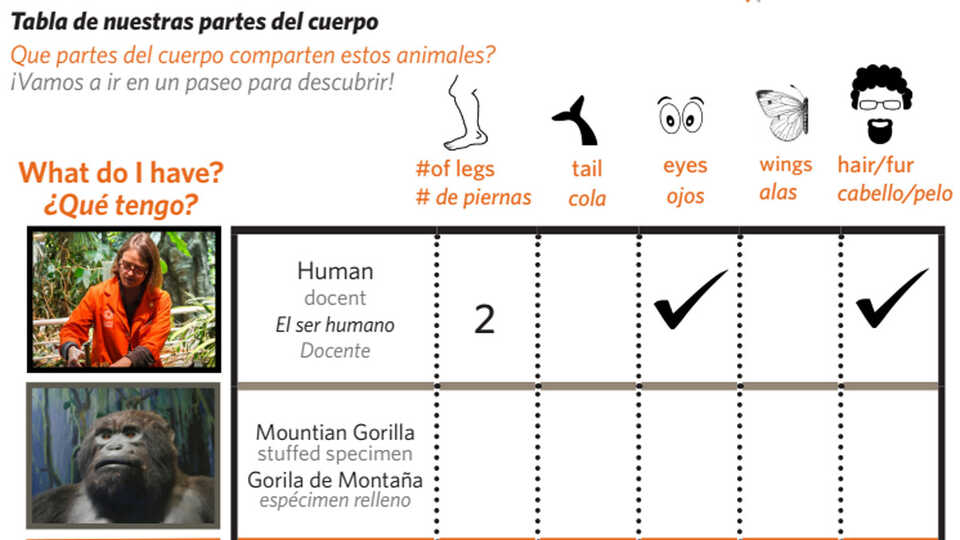In this activity for the museum floor, students will:
- identify, compare, and contrast the major structures of animals
- observe and imitate movements and sounds

In this ready-made museum activity, chaperones will lead small groups of students on a walk around the museum in search of animals. Students will compare and contrast body parts while engaging in discussion, role-play, and imaginative games.
In this activity for the museum floor, students will:
Teacher Tip: This activity is purposefully designed to be facilitated by the chaperone rather than student led. By having adults focus on reading, your students can better explore and make observations at the exhibits.
After your visit, encourage students to continue to observe animals they see in their everyday lives. Think about their bodies, what function their body parts serve, and how they are different or similar to other animals that live around them.
Science and Engineering Practices
Disciplinary Core Ideas
Crosscutting Concepts
Performance Expectations:
Remember, performance expectations are not a set of instructional or assessment tasks. They are statements of what students should be able to do after instruction. This activity is just one of many that could help prepare your students to perform the following hypothetical tasks that demonstrate their understanding:
K-LS1-1 Use observations to describe patterns of what plants and animals (including humans) need.